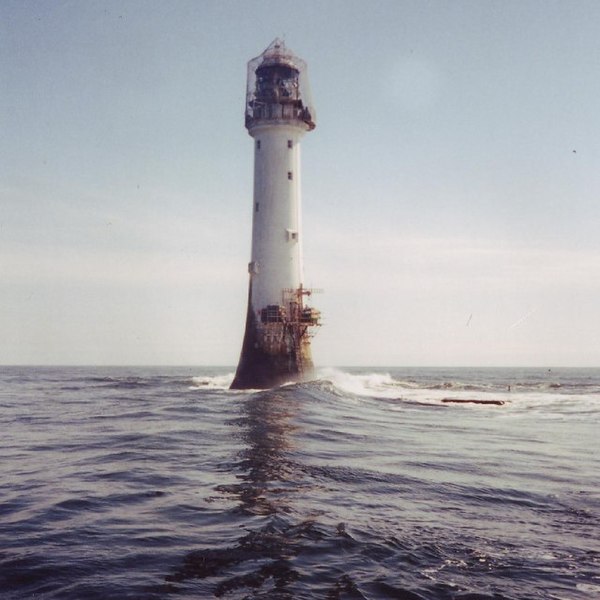By Imogen Reed
When automation came to lighthouses
Automation is a given in most fields of endeavor these days. Very few professions or activities are able to avoid it entirely.
 |
| Bell Rock Lighthouse. Wikipedia Commons photo by Derek Robertson |
The often romantically seen yet absolutely essential labor of the lighthouse keeper is no exception. Yet the need for lighthouses far preceded the ability of mankind to automate the job of human beings. The Bell Rock Lighthouse, off the shores of east Scotland, is a case in point: “In one storm alone, 70 ships were lost off the east coast of Scotland.”
No wonder such institutions have been immortalized in popular culture.
Thus it is that lighthouses have always been, for the seafaring communities at least, not only a romantic and evocative tradition but also a very real guardian of lives.
Lighthouses and the 20th century
The tail-end of the 20th century brought considerable change to lighthouses on the other side of the Atlantic. From the summer 2009 edition of Yankee Magazine, we learn that automation had clearly taken its toll in the US: there remained at the date of the publication of the article in question only one active lighthouse keeper left. All others had gone by 1990. The impact on communities was hardly negligible, and public reaction to these changes was in general negative. People were unhappy that there was no lighthouse keeper around to speak to any more when lights stopped working, locks got rusty and grass wasn't cut in time. A common complaint about the implications of automation which many of us have experienced as train-crossings become automated; as gas stations become self-service; and as banks and other organizations refuse to see you face-to-face.
And yet automation was allowed to stride on – and, in many cases, initially and broadly welcomed.
New England's unparalleled legacy of lighthouses
 |
| Portland Head Light, Maine |
Today, it's the turn of foundations and private organizations to protect and sustain the grand heritage that are lighthouses across the US. A heritage, in its variety and diversity, which can be fully and wonderfully appreciated through visiting just one in all its glory – or, alternatively, by taking the longer adventures that are cruise tours.
New England in particular, as already alluded to, has an unparalleled legacy of lighthouse history. If you are planning to visit the area, don't – whatever you do – leave your guide book behind! A field guide as comprehensive and reliable as Jeremy D'Entremont's brand-new publication will allow you to properly savor the delights of New England lighthouse history.
 |
| Rose Island Light, RI |
As with many areas of historical achievement which in a technological age appear to lose their shine, it has become the job of foundations and private organizations to put on their very best thinking-caps to work out new and innovative ways to keep their precious charges open and in good order. One example is the Rose Island Lighthouse, which has been turned into a full-blown tourist attraction. As befits all practical and interactive exercises in industrial history, visitors can choose between spending “a night as a guest or a week as the 'lighthouse keeper'.”


